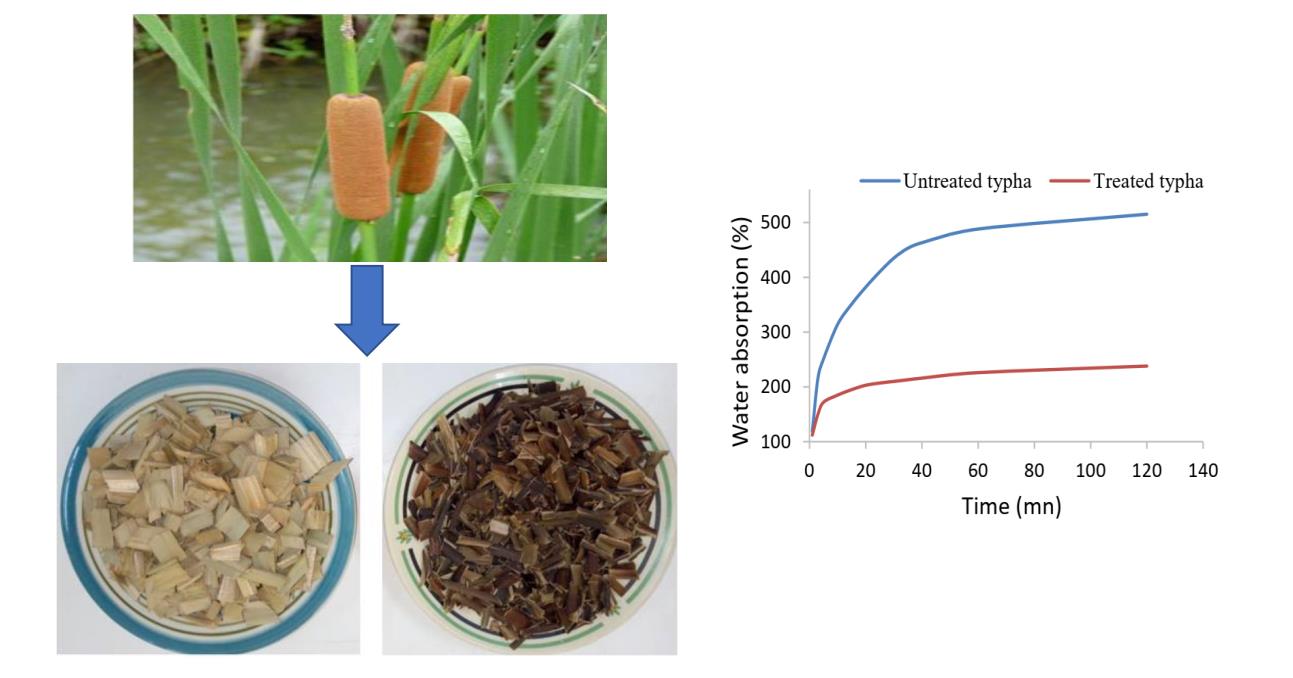 Open Access
Open Access
ARTICLE
Effects of Chemical Treatment on the Physical Properties of Typha
1 Efficiency and Energetic Systems Research Group, Alioune Diop University, Bambey, BP 30, Senegal
2 Laboratoire Eau, Energie, Environnement et Procédés Industriels (LE3PI), Cheikh Anta Diop University, Dakar-Fann, BP 5085, Senegal
* Corresponding Author: Ibrahima Diaw. Email:
(This article belongs to the Special Issue: Materials and Energy an Updated Image for 2021)
Fluid Dynamics & Materials Processing 2022, 18(5), 1409-1418. https://doi.org/10.32604/fdmp.2022.021968
Received 15 February 2022; Accepted 14 March 2022; Issue published 27 May 2022
Abstract
Plant-based concretes are produced from plant aggregates and a binder. Plant fibers are mainly composed of saccharides (sugars) and these sugars can decrease the concentration of Ca2+ ions in the cement pore solution and delay the formation of hydration products. To improve the interfacial bond between fibers and matrix a chemical treatment is widely used. This study investigates the effect of sodium hydroxide treatment on physical and hygroscopic properties of Typha aggregates. In particular, a 5% sodium hydroxide solution is used to treat these aggregates and their bulk and absolute densities, porosity, water content and water absorption are evaluated accordingly. Results indicate that bulk and absolute densities increase after treatment from 56.44 kg/m3 to 122.57 kg/m3 and 541.93 kg/m3 to 555.17 kg/m3, respectively. NaOH treatment reduces porosity of Typha from 89.58 % to 77.92% and decreases water content from 1.4 % to 1%. The treatment with sodium hydroxide reduces substantially the water absorption of the aggregates.Graphic Abstract

Keywords
Cite This Article
 Copyright © 2022 The Author(s). Published by Tech Science Press.
Copyright © 2022 The Author(s). Published by Tech Science Press.This work is licensed under a Creative Commons Attribution 4.0 International License , which permits unrestricted use, distribution, and reproduction in any medium, provided the original work is properly cited.


 Submit a Paper
Submit a Paper Propose a Special lssue
Propose a Special lssue View Full Text
View Full Text Download PDF
Download PDF Downloads
Downloads
 Citation Tools
Citation Tools